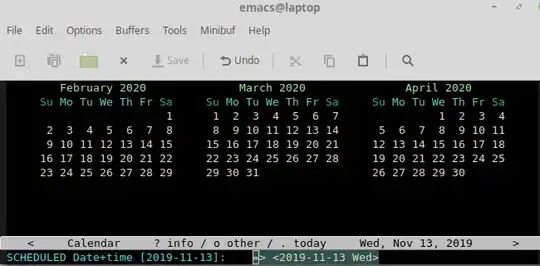There is a lot of inputs you can give to specify a date or time. The whole overview is here. Just some notable examples:
- Relative dates:
+1 or just +: tomorrow+1w: next weeksat: next saturday
- Absolute dates are a bit weird. It uses ISO YMD format by default:
3-2-5 expands to 2003-02-05. I prefer to use 23 jan 19 or 23 jan 2019 (equal to 19-1-23) to use a DMY format.
- To add a time to any date selection use
11am or 11:00
Some Calendar movements also work. Shift+Arrows moves by days. > and < shift the months displayed, ... See Calendar motion and Scroll calendar of the Emacs Calendar manual.
Here's a screenshot where I select the monday in two weeks at 11am by entering +2mon 11am. The date prompt gets updated to indicate my selected date => <2019-11-25 Mon 11:00>. Press Enter to confirm and exit.


